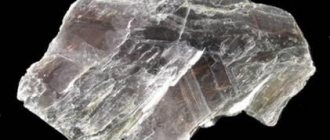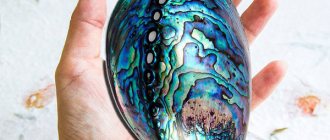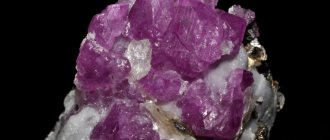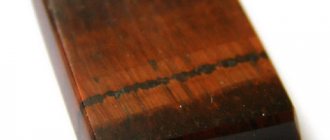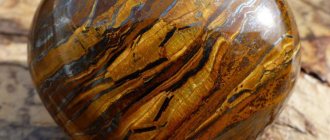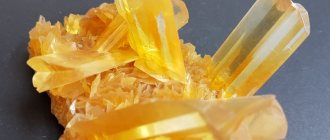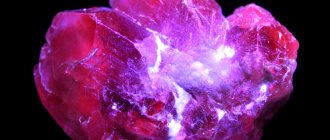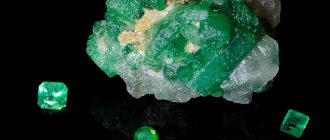Chalcedony is an ornamental stone included in the quartz group. This fine-fibered variety of the mineral has been known to mankind since ancient times. The rock was first mined in Chalcedon, on the shores of the Sea of Marmara. The modern name of the stone comes from this area. Chalcedony is all cryptocrystalline silicas. The group includes more than 100 varieties, differing in color, composition, and properties.
History and origin
A translucent quartz mineral with an unimaginably rich palette of colors was discovered by the ancient Greeks on the coast of the Sea of Marmara, in the city of Chalcedon. The nugget was given a name corresponding to the location of its discovery.
This find was a real breakthrough for the ancient people, since no one could compare with the Greeks in the skill of stone processing. However, it so happened that all the precious minerals were brought from other countries, and many of the stones became the cause of strife and wars.
And then nature revealed its riches to the Greeks. The found deposits of chalcedony marked the beginning of a new direction in jewelry art - glyptics (the art of carving on colored and precious stones). Ancient Greek craftsmen created incredible carved decorations with figures of people, animals, birds, and various scenes from the life of the people.
Such relief figures were called gems, images on convex stone cabochons were called cameos, and carved seals were called intaglios.
This is interesting! Chalcedony is mentioned in many ancient religious scriptures. Thus, in the Revelation of John the Theologian, chalcedony is described as a stone decorating the third of the twelve existing foundations of the walls of the New Jerusalem - the heavenly city.
As fate would have it, Chalcedon was destroyed by barbarians who wiped the city off the face of the Earth. The fall of the Ancient World took with it the art of ancient masters, and the popularity of chalcedony sank into oblivion for many centuries.
The era of Classicism revived interest in the mineral. Excavations of the ruins of ancient cities pleased archaeologists with amazing finds of magnificent gems that were of unimaginable historical value at that time. Representatives of the upper classes began the fashion of decorating their tiaras, brooches and necklaces with such figures, emphasizing their position in society.
Over time, interest in such finds only increased. The kings of Europe collected entire collections of works of ancient art. The Hermitage was famous for its several thousand copies of antique cameos (carved stones
with an image executed in relief) made by ancient craftsmen.
Chalcedony was popular with many historically famous people. Napoleon and Byron wore chalcedony rings, and Pushkin owned two similar jewelry at once. Maximilian Voloshin was fond of collecting various types of minerals found on the Crimean coast, and frequent guests who visited his dacha took with them copies of this collection.
Among the friends who accepted such a gift were Alexei Tolstoy, Nikolai Gumilyov, Alexander Green, Marina Tsvetaeva, Andrei Bely and Osip Mandelstam.
Application in jewelry
Usually the stone is well cut naturally, but jewelers are very fond of its structural features and play with layers and shapes. Chalcedony is processed in all sorts of ways - with beads, cabochons, and transparent samples are sometimes cut. It is possible to carve any figures from beautiful stone. In ancient times, it was popular to carve bas-relief by removing layers of color.
Onyx and jasper are most often used to make useful tools - stone knives, glasses, figurines. Delicate species - sapphirine, chrysoprase - are more often used for inlaying silver and even gold jewelry, as well as for creating beads and pendants.
Place of Birth
Chalcedony is a type of quartz, which, in turn, is one of the most common minerals. Chalcedony is formed due to the crystallization process of volcanic rocks at temperatures from 700 to 1000 ° C or through hydrothermal action.
Germany is famous for its oldest deposit. In addition to this country, the mineral is mined in the following territories:
- Russia (Primorye, Eastern Siberia, Moscow region).
- Brazil.
- Islands of Madagascar.
- India.
- Australia.
- USA.
- Uruguay.
- Italy.
- Czech Republic.
- Poland.
- Scotland.
There are also mining sites in Ukraine and Transcaucasia.
Prevalence
As written above, chalcedony belongs to quartz, which are rock-forming minerals in the earth's crust. Their mass fraction in free rock is 12%, in other rocks – 60%. They are formed during the crystallization of igneous rocks or hydrothermal effects.
In nature, the mineral is presented in the form of spherulites and spherulite crusts. Chalcedony veins, pseudostalactites, and solid massifs are ubiquitous. The largest deposits are located in Brazil, India, Australia, Germany, and Scotland. In our vast homeland there are also plenty of places where chalcedony is developed: Crimea, Transcaucasia, the Urals, the Yenisei, Lena and Kolyma basins, Primorye.
Physical properties
Chalcedony is similar in its physicochemical properties to quartz, being cryptocrystalline transparent minerals of white-yellow shades. The varied color palette of the stone is due to impurities, as well as the geological processes under the influence of which it is formed. However, despite dozens of independent subspecies, all nuggets have the same characteristics.
| Property | Description |
| Formula | SiO2 |
| Hardness | 6,5—7 |
| Density | 2.58—2.64 g/cm³ |
| Refractive index | 1,530—1,539 |
| Cleavage | Absent. |
| singonia | Trigonal. |
| Kink | Uneven, less often shell-like. |
| Shine | Waxy or matte. |
| Transparency | Cloudy, translucent. |
| Color | Bluish, yellowish and gray. |
Recommendations for stone care
Natural stones will not lose their attractiveness with proper care and careful handling of items made from the mineral. Recommendations and care:
- Find safe neighbors for storage. Precious metals and stones with sharp corners and surfaces change and become worn due to contact.
- Do not do household chores with rings and bracelets on your hands. Chalcedony stone deteriorates from chemical solutions and aggressive compounds and loses its shine.
- Protect from mechanical influences: shocks, falls, compression. Despite all the properties of the stone, it should be remembered that any decoration is a fragile product for luxury, beauty and individuality.
This mineral loves to be washed under running warm water. It will begin to glow with indescribable shades. After water, the decoration or product should be dried gently but thoroughly with a soft cloth.
Varieties and colors
Today, mineralogy includes more than a hundred varieties of chalcedony, each of which is named by its own name, emphasizing the individuality of the gem.
Cornelian
A mineral of reddish shades, which gets its color due to the admixture of small particles of Hematite. The name of the stone is of ancient Greek origin. In Latin, the nugget is called “carnelian,” which translates as “dogwood berry.” There are specimens of red-brown, yellow-red and red-pink colors. Prolonged exposure to direct sunlight leads to loss of color saturation - brown shades fade, becoming orange.
Carnelian also has its own variety - sardonyx. This mineral is highly valued by master carvers who create amazing products from it. The stone can be red-black, orange-red or white-brown. The ancient Egyptians revered this gem as a symbol of Isis, the Egyptian mother goddess.
Onyx
This is a layered mineral in which stripes (ribbons) of different colors are clearly visible. Nature presents brown-red specimens or gems with alternating white and multi-colored stripes - black, pink, brown, yellow, red.
Sarder
A brownish-red or red-brown mineral, similar to carnelian, but differing in hue. Ancient manuscripts of the scientist Pliny describe the technique of artificially producing sarder by annealing light varieties of chalcedony, as well as by boiling the light mineral in a honey solution.
Chrysoprase
This mineral is valued by jewelers for its unusual greenish or green-blue hue, formed due to the admixture of nickel. Craftsmen have their own varietal classification of chrysoprase, on which the value and cost of the gem depend:
- The highest grade is a nugget of rich, uniform emerald color, occasionally with small impurities. In this case, the mineral should be visible up to 5 cm.
- The first grade is a green apple-colored stone, translucent up to 2 cm thick with small opaque areas.
- The third grade is an ornamental mineral of a pale bluish-green or yellow-green hue with spots, dendrites, impurities, and areas of varying transparency.
Chrysoprase was discovered only during the Renaissance. Today the mineral is considered rare.
Heliotrope (Bloody Jasper)
An exotic nugget of dark green color with bright red (bloody) spots. Mentions of this gem date back to ancient times. Pliny wrote about heliotrope, and Medieval writings mention inclusions of the mineral as the blood of Christ.
The nugget was once used to make utensils for religious rituals. Today this mineral is revered by jewelers and collectors. Men's rings are decorated with heliotrope and cameos are cut out of the mineral.
Sapphirine
A variety of chalcedony, distinguished by delicate shades of blue. Under the influence of temperatures, the mineral, alas, loses the beauty of its color, turns pale, and fades away.
Agate
This is layered or patterned chalcedony of varying density and transparency. This variety is an independent mineral, which is classified into many separate subspecies, including:
- Brazilian agate, with the finest layering.
- Black.
- Dendritic, with a pattern reminiscent of forest thickets.
- Mokhovaya, with the image of northern moss on a light background.
- Star-shaped.
- Disk.
- Bastion agate, with a pattern reminiscent of ruins.
There is also iridescent chalcedony, a mineral with an amazing metallic iridescent effect in yellow, green and blue.
Areas of use
The aesthetic appearance of the mineral brought it popularity. Added to this is the low cost of the breed and the ability to purchase it in different parts of the world. Already on the pages of the Bible there is a description of the mineral. Various products were prepared from it to accompany a person in everyday life and at feasts:
- cups;
- vessels for food and drinks;
- wall bas-reliefs.
The latter conveyed through the centuries the stories of beloved and revered myths and legends, heroes and their exploits. Legends began to decorate buildings, preserving the connection between eras and generations. Modern use of the gem:
- Jewelry;
- inlays.
Medicinal properties
Considering the variety of varieties of the mineral, it is worth noting that any of its properties differ according to the names of the nuggets. Although there are a couple of features that all chalcedony without exception have in common.
This is interesting: Ancient manuscripts from many countries of the world contain information about the healing properties of chalcedony that our ancestors used. The stone was used for feverish conditions, as well as for skin diseases.
And one of the medieval doctors used chalcedony powder to cure dysentery. Today, Islamists make toothpicks from the yellow and orange mineral. These oral hygiene products are believed to strengthen gums and whiten teeth.
Modern herbal medicine describes the following healing abilities of different types of gems:
- Onyx has a beneficial effect on the liver and kidneys, taking care of the health of these organs.
- Heliotrope helps to establish normal functioning of the cardiovascular system.
- Sarder perfectly heals wounds, ulcers, restores damaged skin, and also fights infertility.
- Chrysoprase is an assistant for weather-dependent people. To treat such diseases, drink mineral-charged water (the liquid with a piece of gem should be infused for 5 hours in sunlight).
- Carnelian relieves toothache, stops bleeding, ensures a general comfortable state of the body, and gives freshness to the skin.
- Sapphirine helps hypotensive patients by increasing blood pressure and also normalizes heart function.
- Agate has an antitussive effect and relieves toothache.
Absolutely all types of stone help calm the nervous system, restoring healthy sleep, relieving depression, so wearing such jewelry is recommended, first of all, for emotionally unstable people. It is worth noting that the stone also needs rest, so it is better to take breaks and not wear the mineral constantly.
Application area
In addition to jewelry, chalcedony is found in crafts and is used in construction for inlaying facades, altars, and interior compositions. The properties of chalcedony make it possible to make pharmaceutical mortars, supports and other parts from it. And in some eastern countries, toothpicks are made from it for hygienic treatment of the mouth.
Thus, the mineral is used in architecture, industry and even medicine. Some healers believe that the stone is capable of charging water, but extensive scientific research has not been carried out on this issue.
The magic of chalcedony
Since ancient times, the mineral has been known as a “love, joyful” stone. Women used the power of the gem to attract their soulmate, because men did not remain indifferent, succumbing to the magic of chalcedony. And the positive energy of a nugget can drive away melancholy, sad thoughts, and melancholy mood from a person. Travelers, especially sailors, took a chalcedony talisman on their journey, believing that it would return them home.
The magical power of the mineral is closely related to its healing properties. Stones of bright colors are stronger in energy, each shade is responsible for certain character traits of the owner:
- Orange gems enhance the owner's acting abilities, awaken talents, and make a person more attractive in appearance.
- The purple hue develops willpower.
- Red is the color of movement, energy, protection.
- The green stone will develop patience and lead a person to self-sufficiency.
- Blue gems suppress anger and anger, organize thoughts.
- The black mineral symbolizes birth and death.
- Brown chalcedony will give balance and bring stability to life.
- Purple is a stone of magic.
The magical properties of the mineral are strong, but not everyone will be able to feel this power. It is necessary to have a nobility of soul and bright thoughts in order to know the magic of chalcedony.
For family people, an unprocessed piece of the mineral is suitable, which will become a talisman of love, happiness, and harmony of intimate relationships.
Favorable time to buy
Chalcedony is calm under any moon. In order for the mineral to be charged with positive energy, it is better to purchase most stones when the month is growing.
It’s good when the shade of the stone or the purpose of the amulet is combined with the days of the week:
- On Monday - pale, blue stones for calm and balance, development of intuition;
- on Tuesday - red and purple to increase activity and determination;
- Wednesday is good for talismans of career and business growth, moving - golden and green palette;
- Thursday – for order, calm, regularity, stabilization – sand and brown colors;
- Friday - for love, these are red, pink and blue stones;
- Saturday for deep searches, meditation, working out internal problems - black and white, purple stones;
- Sunday is suitable for purchasing any amulet for yourself or your home.
It is customary to buy talismans for a birthday, wedding anniversary or memorable meeting, housewarming, name day. You need to buy chalcedony for yourself; it is given only to families or from parents to a child.
Compatibility with other stones
Chalcedony is a stone of the earth element. Therefore, the proximity of earthly brothers is not alien to him. The mineral also behaves friendly with Air stones. However, it is worth remembering that such a bright, individual gem should still be worn separately from other jewelry.
Combining chalcedony with other multi-colored minerals is not the best idea even from a stylistic point of view, not astrology. If the chosen stone is compatible with your character, it will certainly establish the necessary relationship and let this connection not be burdened by unnecessary proximity.
Zodiac connections
Astrologers have studied the compatibility of each variety with the zodiac circle.
Each type has special cosmic properties and who they are suitable for should be known when choosing a talisman. All varieties of chalcedony are capable of performing the same actions in relation to the owner:
- calm down;
- create conditions for mental clarity;
- strengthen mental balance;
- pacify anger;
- increase self-confidence;
- restoration of relationships between loved ones.
The remaining properties of the stone are divided into types:
Heliotrope
Talisman of the sages. Scientific thoughts and searches for the right solution will be bright and timely. A person will begin to draw conclusions, get out of a dead end, quickly find mistakes, and calculate the right moves.
Mysterious heliotrope stone, suitable for the following constellations:
- Cancer;
- Sagittarius.
If they carry amulets made of the mineral with them, they become happy and lucky. Everything becomes quickly achievable, as if by magic.
Who should not choose heliotrope:
- Scorpion;
- Calf;
- A lion.
Bright constellations may acquire unnecessary activity, become fussy, disorganized, and sloppy in business and behavior.
Plasma
Another type is plasma. Who is it suitable for? Taurus. Especially women who have this zodiac sign. They become kinder and calmer. Begins to change their character. Plasma is given to mothers-in-law and daughters-in-law if they become grumpy and grumpy. Plasma is not recommended for Aquarius. They cannot be in a state of rest, peace and silence.
Chalcedony is a stone of numerous amulets.
Chrysoprase
An amulet of people striving for changes in life and new inventions. The look protects from troubles and dangerous situations. Chrysoprase is the patron saint of good people.
It will help other zodiac constellations:
- Cancers;
- Lions.
A variety of chalcedony is an excellent amulet during the period of studying foreign speech. It expands memory capabilities and strengthens vocabulary.
Jewelry with mineral
Chalcedony is considered an ornamental stone. All types of gems are beautiful in their own way, common in nature and, accordingly, very affordable. Chalcedony is used to make beautiful, inexpensive jewelry. If we talk about jewelry made of silver or gold, the price will be much higher:
- The price of a silver ring starts from 5 thousand rubles, while a gold one can cost 3–5 times more, depending on the accompanying inserts. If we are talking about luxury jewelry with a rare type of agate, for example, moss agate, then the price can reach 100 thousand or more.
- Earrings made of silver can be purchased from 3 thousand rubles; gold, accordingly, costs more.
- A silver pendant is estimated at 2 thousand rubles, but can reach 20 thousand.
- Bracelets start from 5 thousand for silver.
As for simple beads and bracelets made of chalcedony cabochons, the price starts at 300 rubles for a bracelet and from 500 rubles for beads. The main thing is to be able to distinguish a natural mineral from plastic or glass.
Gallery: chalcedony stone (45 photos)
Today chalcedony is a world-famous jewelry and ornamental stone. It is widely used in the manufacture of women's beads, bracelets, rings, pendants and earrings. Jewelry with chalcedony is also created for the stronger sex. These include rings, cufflinks and tie clips.
The gem is used as an ornamental stone to create figurines, dishes, furniture, and mosaic paintings. Chalcedony onyx, unique in its beauty, is used in the production of lampshades and stained glass.
How to distinguish natural chalcedony from a fake?
Of course, there is no need to counterfeit an affordable gem, however, when it comes to more expensive varieties, there is a risk of bumping into glass or plastic. There are several ways to find out:
- Natural chalcedony is always heavier than fakes.
- A natural mineral will remain cold if you hold it in your palms, but glass or plastic will quickly absorb the warmth of your hands.
- A true mineral is endowed with uneven color, defects and inclusions.
- A fake always looks unnatural, having a bright, unnatural color.
You can also come across such a scam as simple chalcedony colored with iron nitrate, passed off as the rarer and more expensive carnelian. By splitting this stone, you can see the truth - the color covers a maximum of 2 mm of the cabochon thickness.
How to recognize imitation
Well, and finally, signs by which it is very easy to distinguish a fake:
- Natural stone is denser and heavier than imitations;
- True chalcedony, unlike glass, does not heat up upon contact with the human body;
- Falsifications always look unnatural. It is almost impossible to artificially achieve the natural uneven color of a mineral with its calm tones and arbitrary inclusions.
How to wear and care?
The owner must determine the time for purchase independently, guided by his inner instinct. Chalcedony is unpretentious to dates, lunar phases or days of the week. The main thing is to establish the necessary connection with the mineral.
It is important to know that the mineral used as a talisman should be worn close to the body, without exposing it to others.
You need to wear and care for jewelry carefully, adhering to a few simple rules:
- The product must be removed before any physical activity, in order to avoid mechanical damage, as well as before contact with household chemicals or sudden temperature changes. Any of the factors is harmful to the mineral.
- Chalcedony should be stored separately or wrapped in a soft cloth to prevent other stones from scratching it.
- It is better to clean the mineral with a soft cloth and a weak soap solution.
Sapphirines and chrysoprase are especially sensitive to the sun. To avoid color loss, it is better not to expose them to rays for a long time.
Rules of care
As for caring for chalcedony, the rules for its maintenance are standard and differ little from the instructions for storing other stones: avoid mechanical and chemical damage, as well as temperature changes. In addition, steam and ultrasonic cleaning of this mineral is strictly prohibited.
Chrysoprase and sapphirines should be kept away from the sun, since the stones, as mentioned above, fade.
Name compatibility
Chalcedony, in its holistic concept, not divided into subspecies, patronizes the owners of various names, among which the fair sex predominates:
- Valeria. For her, the mineral will become a real amulet of love and harmony in family relationships.
- Inga. A girl with an unusual name and the same character. For her, chalcedony will become a protection against negativity, an assistant in overcoming difficulties, as well as a source of energy and spiritual growth.
- Irina. The gem will bring joy into her life and attract the attention of the opposite sex.
- Ksenia. Chalcedony will help this girl cope with melancholy, fall in love with life and gain the desire to find love.
- Oksana. The mineral will drive away dark thoughts from her, teaching her to enjoy life.
- Sergey. The nugget will help this man calm the storm of emotions, giving the owner the qualities he needs - patience, courage, wisdom.
Men with other names will also find a patron in chalcedony, but each of them should take a closer look at a certain variety.
Talismans and amulets
Chalcedony is a stone of people who devote themselves to science. It helps increase concentration, strengthens willpower and helps achieve goals.
This mineral is considered the patron saint of sailors : sailors believed that a chalcedony amulet would help them find their way to home.
Agate talismans (bracelets, pendants or beads) help children avoid injury.
Chalcedony is also a stone of women . It enhances natural female magnetism and helps to find true love.
Chalcedony and the signs of the zodiac
Astrologers unanimously classify this mineral as a universal stone. The gem will not harm any of the zodiac signs, but for some the gem will reveal all their abilities, while for others it will become just a decoration.
(“+++” – the stone fits perfectly, “+” – can be worn, “-” – is strictly contraindicated):
| Zodiac sign | Compatibility |
| Aries | + |
| Taurus | + |
| Twins | +++ |
| Cancer | +++ |
| Leva | + |
| Virgo | + |
| Scales | + |
| Scorpion | + |
| Sagittarius | +++ |
| Capricorn | + |
| Aquarius | + |
| Fish | + |
The “favorites” of chalcedony are representatives of the following constellations:
- Sagittarius. Here is ideal energy compatibility. The mineral gives the owner self-confidence, protects against the negativity of one’s own emotions, helping to achieve any goals.
- Cancer. For this family, the gem prepares success in love affairs. The stone will help create a strong and friendly family, protecting spouses from betrayal and conflicts in the future.
- Gemini will become more balanced and restrained with the chalcedony talisman. In addition, the nugget will help the owner focus on achieving one significant goal, without being distracted by unimportant matters.
Another group of zodiac signs should pay attention to certain types of stone:
- Aries. Heliotrope is most suitable for representatives of this constellation. This mineral will enhance your best qualities, driving away negative emotions.
- Capricorn. Multi-colored minerals will help you cope with material difficulties and improve your financial situation.
- A lion. Orange gems will give free rein to the hidden abilities of Leo, while slightly taming the natural fervor of emotions.
- Virgo. Green and yellow varieties of stone have a beneficial effect on the emotional and physical health of representatives of this constellation.
Chalcedony in blue, pink and white tones is suitable for Libra and Taurus. Other signs of the Zodiac can only count on a beautiful decoration, since the magical properties of the mineral will not be revealed to them.
Who is not suitable for chalcedony?
Surprisingly, chalcedony is a really friendly stone; in terms of energy, it suits all zodiac signs. However, we must take into account that this is more of a feminine stone, so men need to carefully choose products with it - bet on those that indicate a strong beginning. For teenagers, such a stone is completely suitable, without being tied to the floor.
From a health point of view, people with acute forms of illness should be careful. Experts say that this stone can disrupt blood flow when worn for a long time. Also, in some cases, it can cause apathy or anxiety attacks. In such situations, you should either choose a stone of a different shade, or wear it less often - in the absence of contact, unpleasant symptoms go away.
RELEVANT: Spinel is an attractive and incredibly strong stone
Difference between original minerals
Chalcedony has attracted the attention of craftsmen since ancient times. They create masterpieces and works of art from small natural formations. The beauty of appearance allows you to get an original and only copy of the product in the world. New deposits are not being found on the planet; old ones are being depleted. Counterfeits are trying to take the place of natural wood.
We recommend reading: Heliotrope - a bloody stone that wraps the sun
Fraudsters and unscrupulous traders often seek to confuse buyers by offering counterfeit materials. It is difficult to distinguish from a fake without special knowledge. Modern technologies create ornamental stones from plastic and glass. The easiest way to check for truth is to contact a specialist. If this is not possible, you can check and compare the following parameters:
- beads of perfectly identical sizes are fake;
- the same shade of each of the beads is a fake.
Even the most skilled jewelers cannot replicate the patterns. Stamped products are not an option for chalcedony. Before purchasing, it is advised to look at the appearance of stone products exhibited in museums. Collectible gems will help you understand the true nature of crystals. The properties of the stone are described in textbooks on gemology. The color is vague and modest, the bright shine is not characteristic of natural formation.
Color types of mineral and their characteristics
The colors of chalcedony are the result of metallic impurities (such as iron, nickel, copper and titanium) present during crystallization. The undyed material is often grayish-blue. Chalcedony often comes in pink, tan, yellow, white gray and gray-blue. Yellow-orange chalcedony is also known as sard or carnelian. The green variety of chalcedony is known as chrysoprase, while the striped variety is known as agate. Heliotrope has red spots, while onyx has white or black stripes. All of these gemstones are part of the extensive chalcedony family.
It is also characteristic that single-color varieties are sold under the name Chalcedony, while the rest of this group receives unique and specific names such as Onyx, Carnelian, Heliotrope.
Blue Mojave chalcedony is mined in California and Nevada. It has colors ranging from grayish blue to light-medium shade with a range from light to medium.
Blue chalcedony from Namibia, often called "African blue", ranges from grayish to almost pure blue and light to medium dark.
The most unusual type, and perhaps the most valuable, is from Oregon. Its blue undertones vary from slight to moderate amounts of pink, creating a noticeable lavender hue. It's called "Holly Blue".
Chalcedony from California
More detailed information about deposits for chalcedony varieties.
- Chalcedony: California; Iceland; India; Mexico; Namibia; Nevada; Oregon; Russia.
- Carnelian: Brazil; Egypt; India; Uruguay.
- Sardis: Brazil; Uruguay.
- Bloodstone - Heliotrope: Australia; Brazil; India; United States.
- Chrysoprase: Western Australia (Yandramindra, Vingelina, Kalgoorlie); Brazil; California;Russia.
